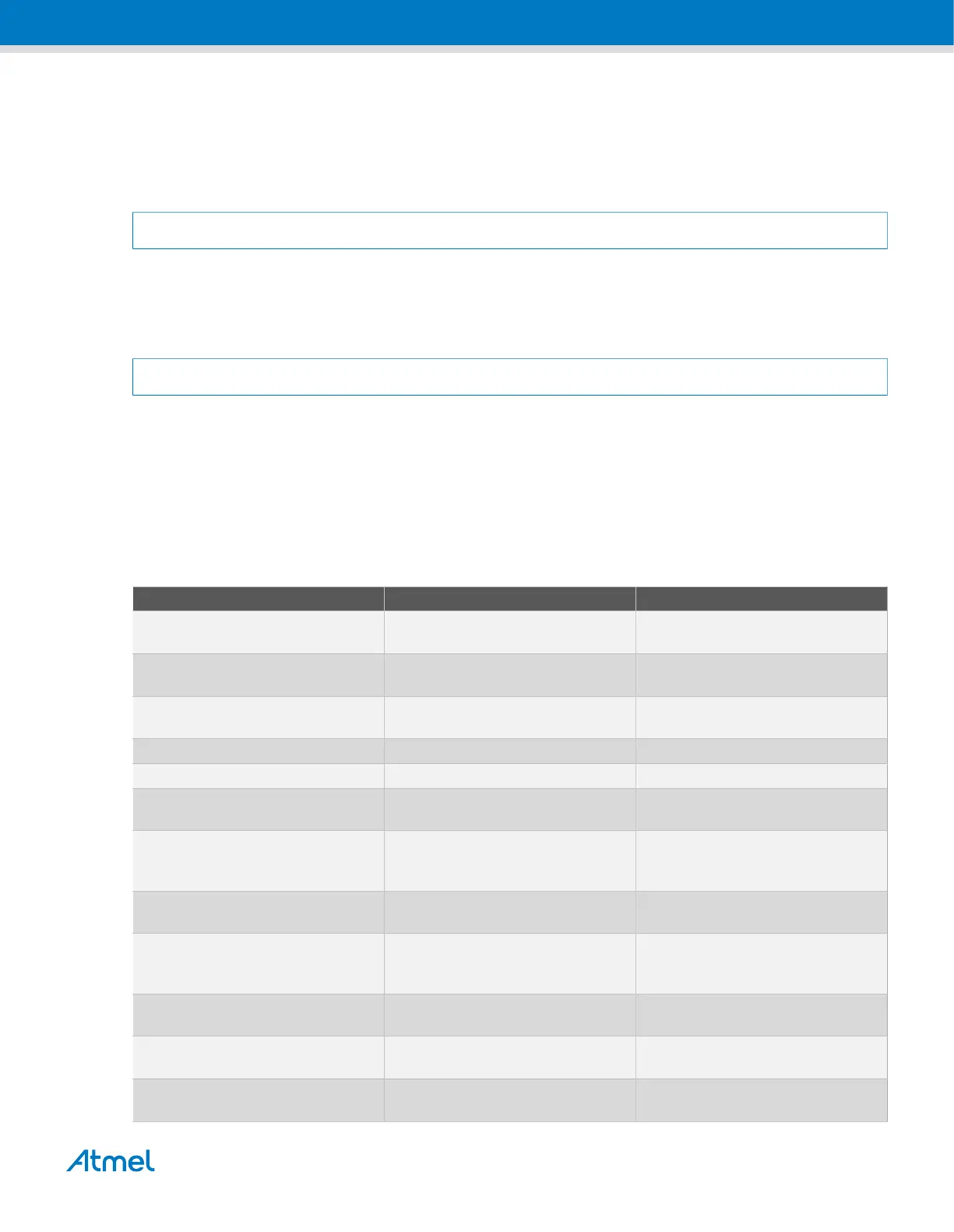AT07334: SAM4 TWI Master Mode Driver [APPLICATION NOTE]
42274A-MCU-05/2014
8
4. API Overview
4.1 Variable and Type Definitions
4.1.1 Type twim_transfer_status_t
typedef enum twim_transfer_status twim_transfer_status_t
See twim_transfer_status for enumeration definitions.
4.1.2 Type twim_callback_t
typedef void(* twim_callback_t )(Twim *)
4.2 Structure Definitions
4.2.1 Struct twim_config
This is the configuration structure for the TWI Master device. It is used as an argument for twim_set_config to
provide the desired configurations for the module.
Table 4-1. Members
Type Name Description
uint8_t clock_drive_strength_low Pull-down drive strength of the
TWCK output buffer
uint8_t clock_slew_limit Slew limit of the TWCK output
buffer
uint8_t data_drive_strength_low Pull-down drive strength of the
TWD output buffer
uint8_t data_setup_cycles Clock cycles for data setup count
uint8_t data_slew_limit Slew limit of the TWD output buffer
uint8_t hs_clock_drive_strength_high Pull-up drive strength of the TWCK
output buffer in high speed mode
uint8_t hs_clock_drive_strength_low Pull-down drive strength of the
TWCK output buffer in high speed
mode
uint8_t hs_clock_slew_limit Slew limit of the TWCK output
buffer in high speed mode
uint8_t hs_data_drive_strength_low Pull-down drive strength of the
TWD output buffer in high speed
mode
uint8_t hs_data_slew_limit Slew limit of the TWD output buffer
in high speed mode
uint8_t hsmode_data_setup_cycles Clock cycles for data setup count
in high speed mode
uint32_t hsmode_speed The baudrate of the TWI bus in
high speed mode

